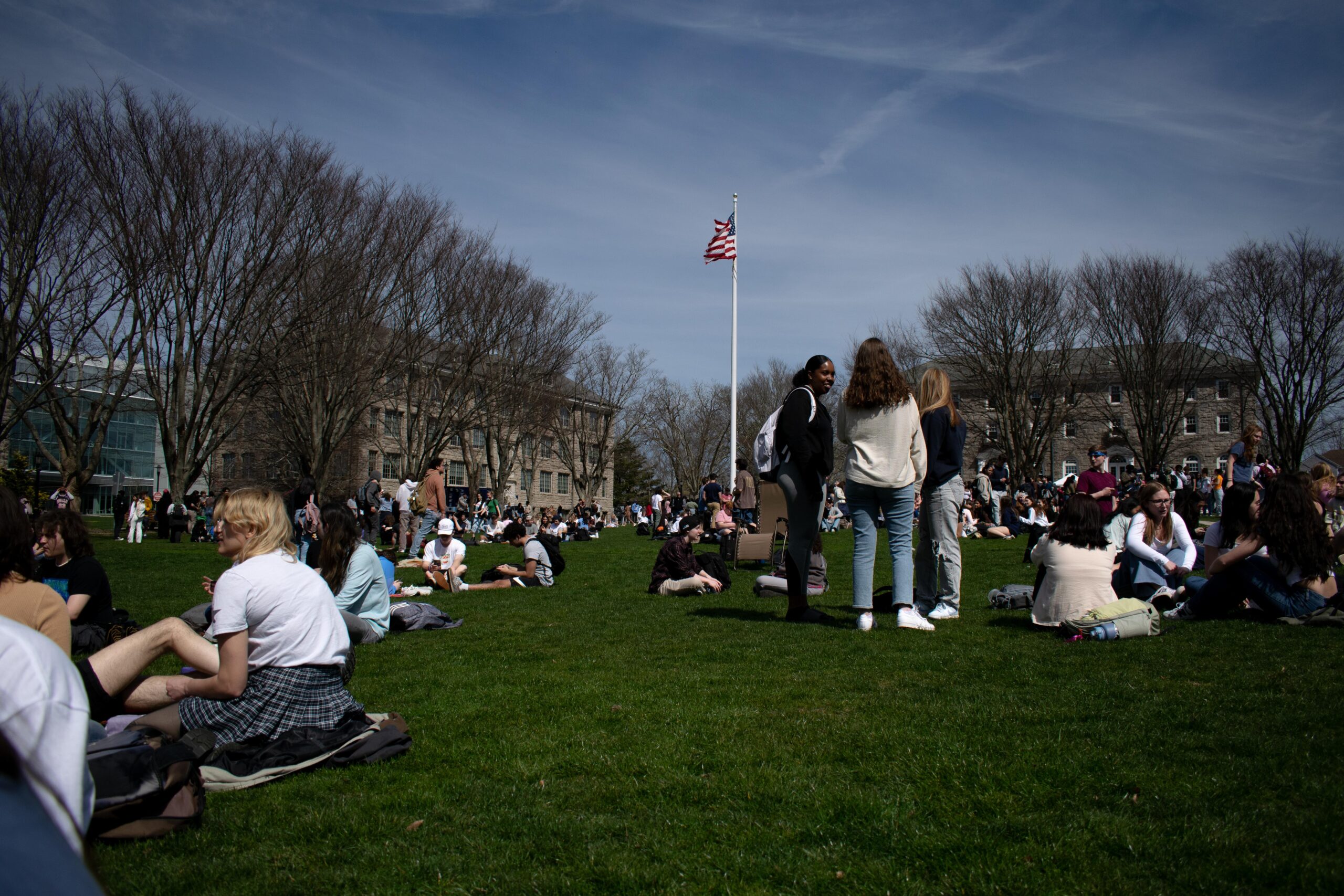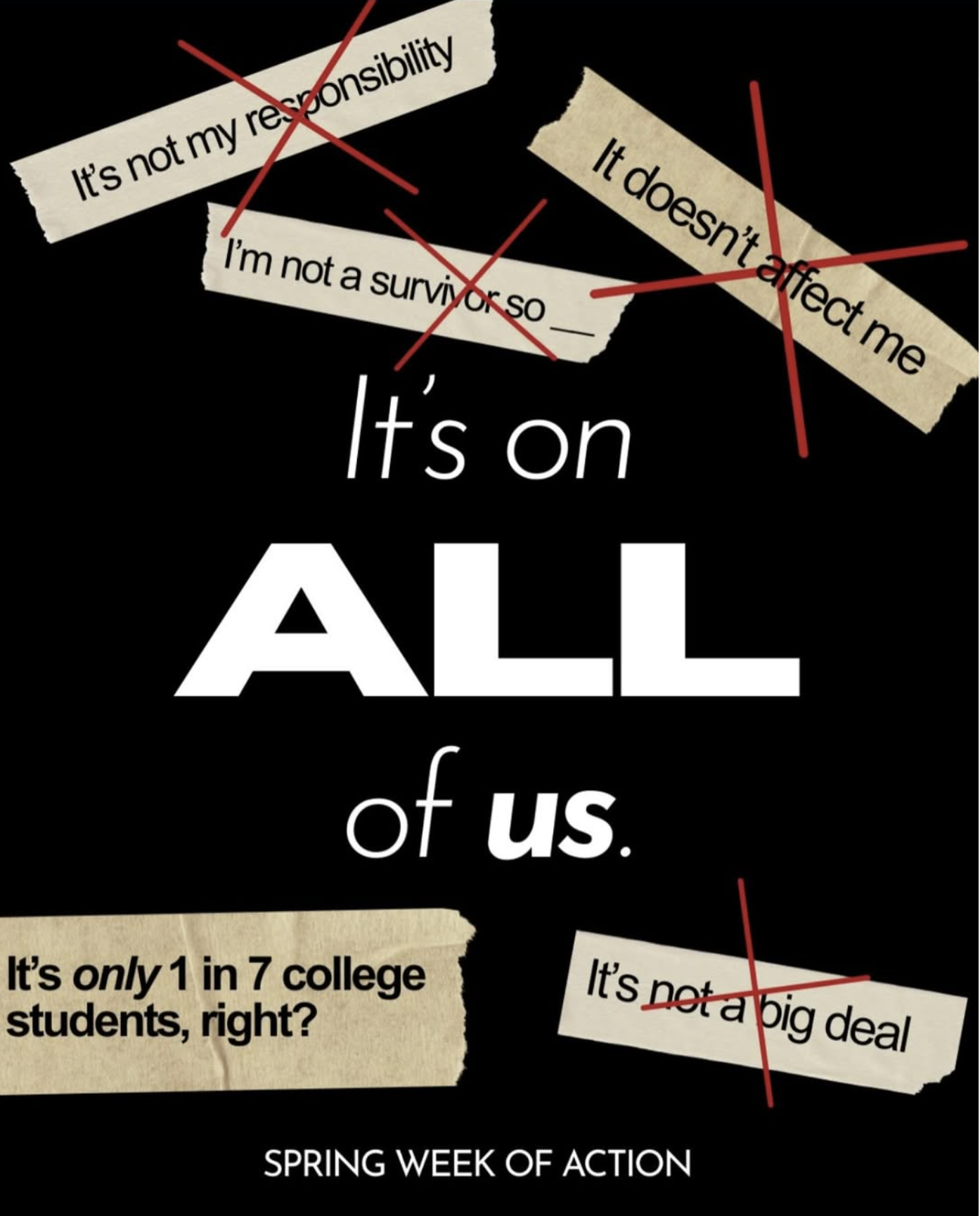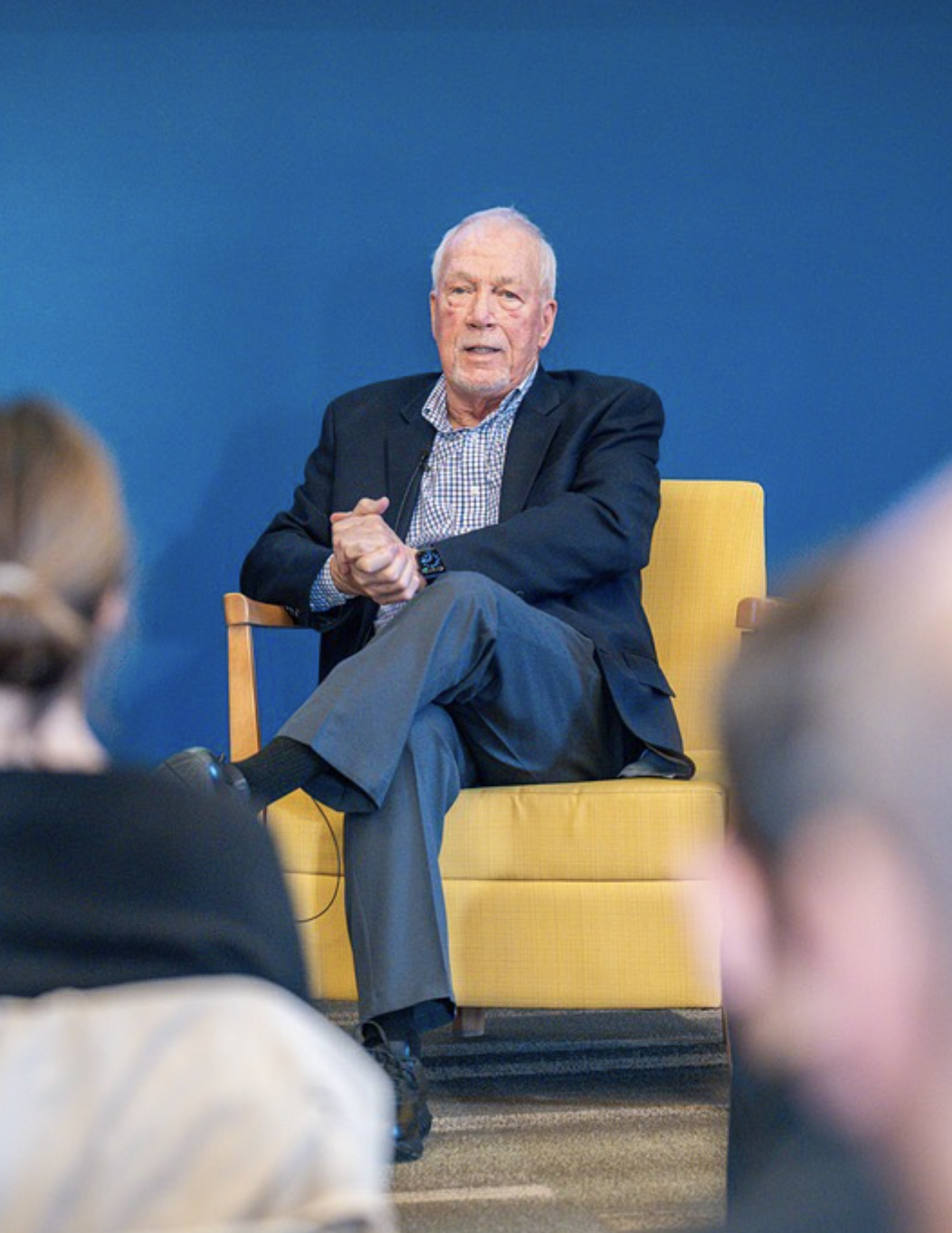On Monday, April 8, more than 800 University of Rhode Island students took over the quadrangle to watch a nearly 90% total solar eclipse.
A solar eclipse is an uncommon astronomical event where the moon’s shadow covers the sun. Many people in the country may remember the last major solar eclipse that happened in 2017.
This year the line of totality, which is the area where a total solar eclipse is visible, was much closer to the New England area, covering the northern parts of Vermont, New Hampshire and Maine in totality.
The solar eclipse coalesced with warm weather and clear skies that helped contribute to the large attendance on the quad.
The URI Department of Physics helped advertise and enhance the eclipse viewing experience on the quad outside of East Hall, said Rob Coyne, a physics associate professor. They gave out 500 pairs of eclipse glasses, and also had a solar telescope and a pair of solar binoculars open to the public with the help of physics teaching assistants.
“It was great seeing that many people out there enjoying this once-in-a-lifetime opportunity this close to such a fascinating celestial phenomenon,” Coyne said.
Coyne is also an active researcher in gravitational wave astronomy. As a member of the physics department, he was one of the people who helped plan the event on the quad.
As the department was turning its attention towards the spring semester around December and January, they knew they wanted to do something for the upcoming astrological event, Coyne said. After months of planning, the turnout came to be quite the shock for Coyne.
“We would be remiss if we didn’t do something,” Coyne said. “We were pleasantly surprised if not a little overwhelmed by the incredible turnout.”
The quad turnout was much larger than the turnout for the more partial 2017 eclipse, which happened before the fall semester of that year, Coyne said. The physics department held an event on the quad for that day that a few dozen people showed up for.
“As soon as I realized how big the crowd was, I went down immediately to start helping out and I was probably there until 4:30 p.m., and during that time I ran into dozens of current and former students,” Coyne said. “The weather was perfect, your quintessential spring day.”
Seeing that Rhode Island was much closer to totality this time around, the physics department prepared for many more people to show up, but were still surprised by the turnout, Coyne said.
“I knew there was going to be more people than usual but I wasn’t expecting everyone to be outside,” first-year Ayla Zambardi said.
URI students taking astronomy courses were encouraged to attend the eclipse. Astronomy professor Douglass Gobille traveled to view it in totality himself, and suggested the quad event to his students, first-year Jordan Malkovich said.
“People were playing music, throwing balls, tanning and having fun.”Malkovich said,,
With such a large turnout the entire quad was covered in towels and blankets and groups of people set up to socialize and watch the solar eclipse.
“It was a great moment to connect with fellow Rams,” first-year Abigail Gauntlet said. “It got darker and I could feel it getting colder and it was weird for it to be so dark at 3 p.m. and the shadows on the trees were all wrong.”
Several students said an Instagram post made by the physics department, @physicsuri, and reposted by other pages was the way they knew the quad event was happening. First-year Luke Lagusse said that he saw that Instagram post a few days before the event and got some of his friends to go out to the quad.
For more information regarding the URI Department of Physics, visit their department site at web.uri.edu/physics/ . If you want to learn more about eclipses, visit the National Aeronautics and Space Administration site at science.nasa.gov/moon/eclipses/ .





